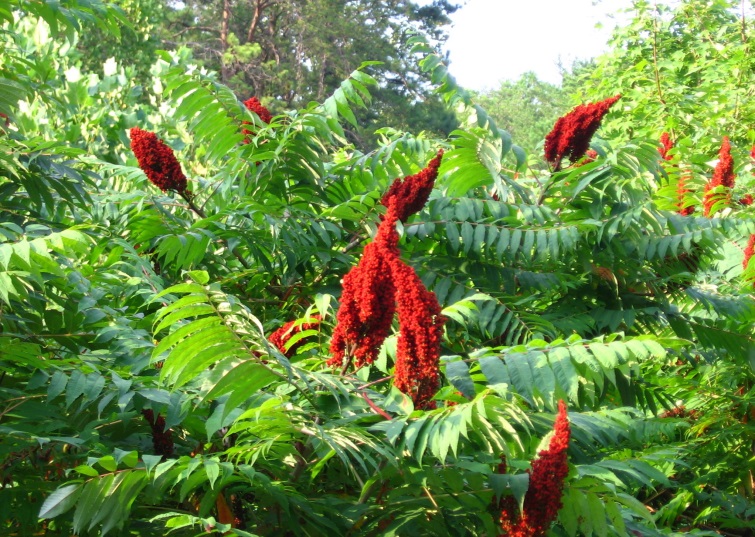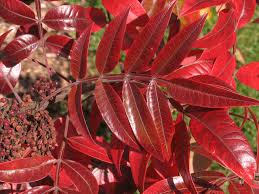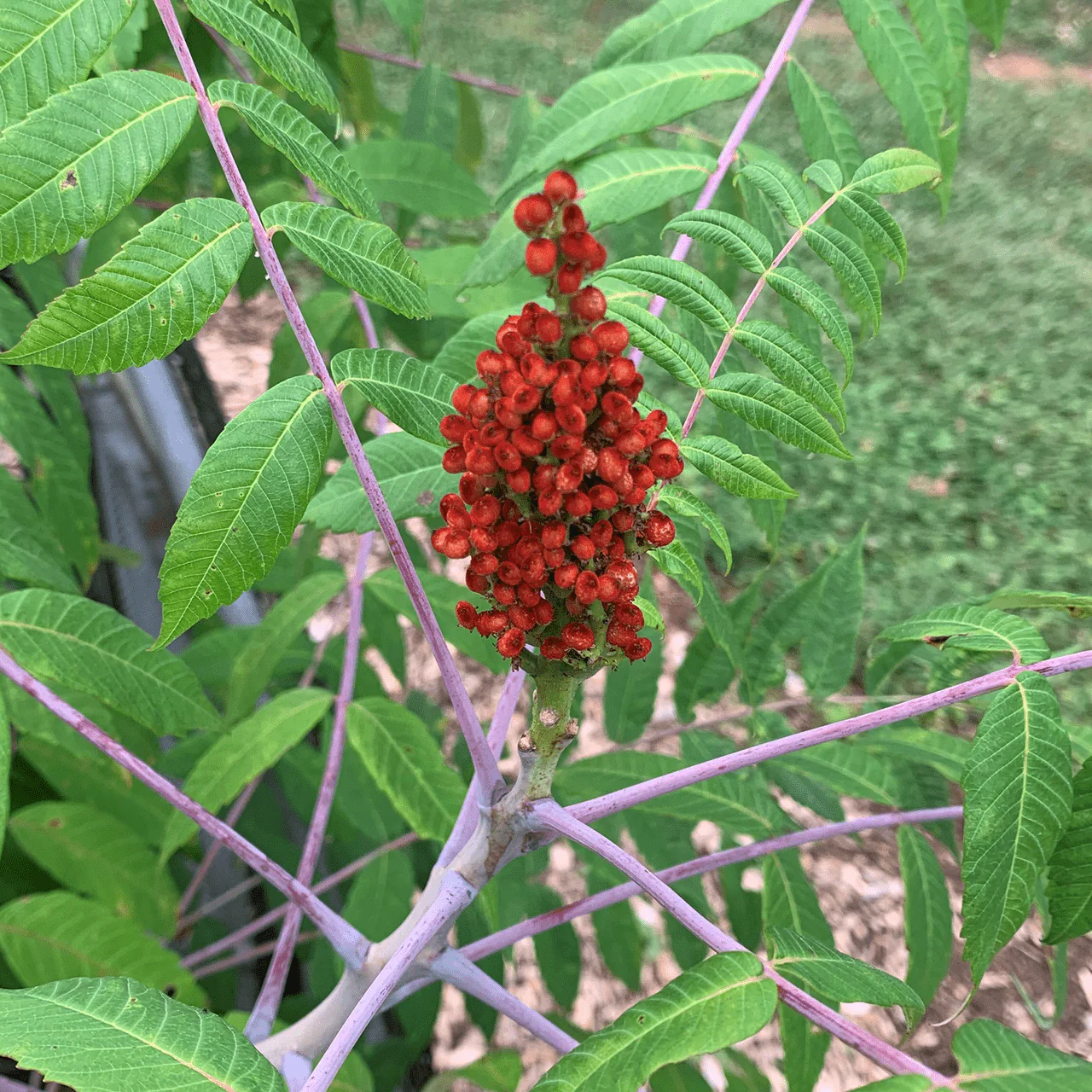Natural Highlights: The Colorful Sumacs


Among the most brilliant contributors to the fall color palette in the Midsouth are the shrubs and small trees that comprise the sumacs (Genus Rhus) whose leaves display bright shades of red, orange and yellow as winter and the dormant season approaches. The sumacs, specifically Staghorn Sumac (Rhus typhina), Smooth Sumac (Rhus glabra), and Winged or Shiny Sumac (Rhus copallinum), are probably familiar to anyone who has taken a long walk along the Wolf River Greenway or a drive out in the countryside, and none of them cause an itchy rash. Poison Sumac (Toxicodendron vernix) is actually in a different genus along with Poison Ivy and Poison Oak, and it is rare in Tennessee - though Poison Ivy (T. pubescens) is extremely common and also sports gorgeous fall color.
Classic pioneer species, the sumacs sprout up in disturbed landscapes such as old fields and along roads and trails, then spread via seeds and suckers into groves and thickets if given the opportunity. They have tremendous value for wildlife, nourishing legions of pollinators with clusters or panicles of small whitish flowers in the spring. The flowers give way to reddish fruits (drupes) which feed insects, birds, and mammals, and the pithy stems provide homes for insects. People have utilized the sumacs medicinally for centuries - Staghorn Sumac was once thought to fight typhoid - and a lemonade-like drink can be made from the drupes.
How to tell the three sumacs apart? All of them have long compound leaves with numerous narrow serrated leaflets. The Winged Sumac has “wings” along the stems of its compound leaves and the leaflets are very shiny as if they’ve been waxed. The Staghorn Sumac grows the tallest of the bunch, up to 20-30 ft., and its stems and fruits and the underside of its leaves are all quite fuzzy and covered in soft “hairs” – thus resembling the velvet covering a deer’s antlers or “staghorns.” The Smooth Sumac, on the other hand, has neither fuzz nor wings, though its leaves are shiny; it is one of the most widespread plants in the country, found from coast to coast and north to south.
There are other tree species with compound leaves such as the hickories and the invasive tree-of-heaven which might cause some confusion in identifying the sumacs, but differences in leaf shape and other characteristics are clear with a good field guide.
For more information on Staghorn, Smooth and Winged Sumac, here are few sources to get you started:
https://www.youtube.com/watch?v=FOKMGaZ0cjg
https://www.missouriplants.com/Rhus_typhina_page.html
https://www.fs.usda.gov/wildflowers/plant-of-the-week/rhus_typhina.shtml
https://www.missouribotanicalgarden.org/PlantFinder/PlantFinderDetails.aspx?kempercode=l990
https://www.wildflower.org/plants/result.php?id_plant=RHCO
Discover the vibrant fall colors of sumacs in the Midsouth. Learn to identify Staghorn, Smooth, and Winged Sumac and their benefits for wildlife.







.jpg)



